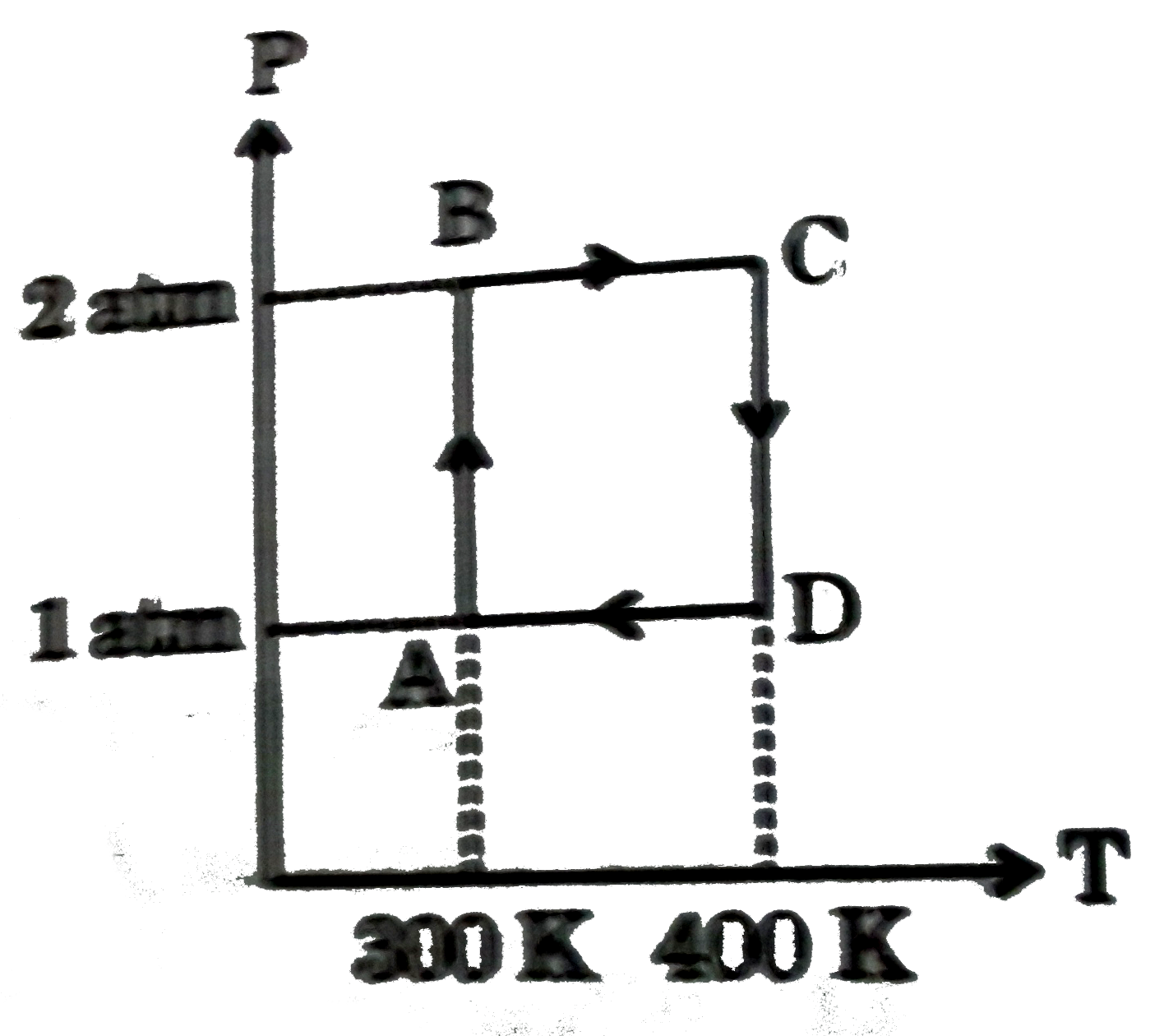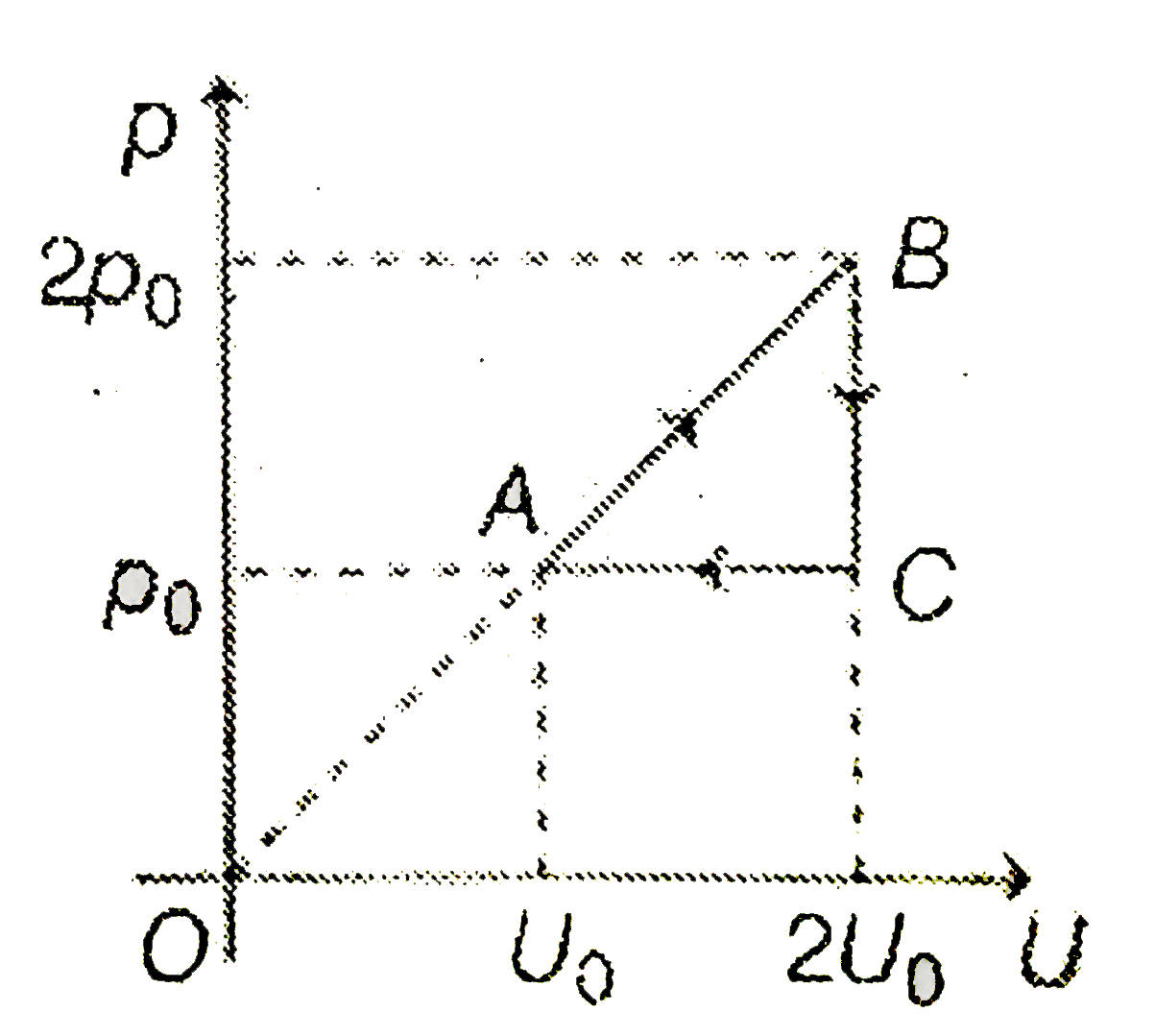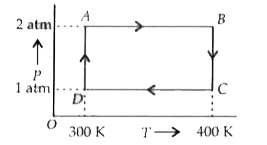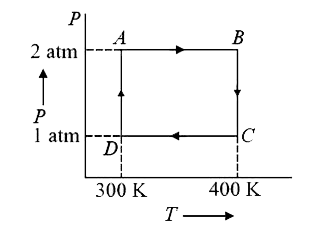One mole of Helium gas undergoes a reversible cyclic process ABCDA as shown in the figure.Assuming gas to be ideal, answer the following questions :

What is the value of 'q' for the overall cyclic process:
−100Rln2
+100Rln2
+200Rln2
−200Rln2
The correct Answer is:B
q=qAB+qBC+qCD+qDA
=−1R×30ln2+1×5R2×(400−300)+1R×400ln2+1×5R2×(300−400)
(∵qAB=−WAB=−1R×300ln2 since process is reversible isothermal for which ΔU=0)
(∵qBC=ΔHBC=1×5R2×(400−300) since process is reversible isobaric )
(∵qCD=−WCD=1R×300ln2 since process is reversible isothermal for which ΔU=0 )
(∵qDA=ΔHAB=1×5R2×(300−400) since process is reversible isobaric )
So, q=100 Rln2
Topper's Solved these Questions
Similar Questions
Two moles of Helium gas undergo a reversible cyclic process as shown in figure. Assuming gas to be ideal, what is the net work involved in the cyclic process ?

View Solution2 moles of an ideal monoatomic gas undergoes a cyclic process ABCA as shown in the figure. R is the univers l gas constant. (given ln 2=0.693) Answer the following questions

Graph of pressure versus volume of the cyclic process ABCA is
View Solution
Knowledge Check
One mole of Helium gas undergoes a reversible cyclic process ABCDA as shown in the figure.Assuming gas to be ideal, answer the following questions :

What is the value of ΔH for the overall cyclic process:A−100Rln2B+100Rln2C+200Rln2DZeroOne mole of Helium gas undergoes a reversible cyclic process ABCDA as shown in the figure.Assuming gas to be ideal, answer the following questions :

What is the net work involved in the process A to C :A−100R(1−ln8)B300Rln2C−100R(1+ln8)D200 JOne mole of Helium gas undergoes a reversible cyclic process ABCDA as shown in the figure.Assuming gas to be ideal, answer the following questions :

Polytropic process for ideal gas is given as PVth=constant. For polytropic process for an ideal gas.the expression for work obtained is :
w=P1V1[(V2V1)x−1](y) Report your answer as (x+y).A0B1C2D3
Two moles of Helium gas undergo a reversible cyclic process as shown in figure. Assuming gas to be ideal, what is the net work involved in the cyclic process ?

View SolutionTwo moles of Helium gas undergo a reversible cyclic process as shown in figure. Assuming gas to be ideal, what is the net work involved in the cyclic process ?

View SolutionTwo moles of Helium gas undergo a reversible cyclic process as shown in figure. Assuming gas to be ideal, what is the net work involved in the cyclic process ?

View SolutionTwo moles of helium gas undergo a cyclic process as shown in figure. Assuming the gas to be ideal. The net work done by the gas is

View SolutionTwo moles of helium gas undergo a cyclic process as shown in figure. Assuming gas to be ideal, the net heat exchange in the process will be

View Solution
